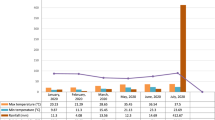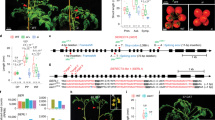Abstract
SULTANA vines are pruned to a limited number of one-year-old shoots (canes), each of which may carry up to 20 buds. As canes vary greatly in the proportion of fruitful buds the pruner aims to retain only the more fruitful ones on the vine. Such a selection is possible because the appearance of a cane indicates to some extent its fruiting potential1. But it is not known why canes of comparable origin differ both in appearance and in fruitfulness.
This is a preview of subscription content, access via your institution
Access options
Subscribe to this journal
Receive 51 print issues and online access
$199.00 per year
only $3.90 per issue
Buy this article
- Purchase on Springer Link
- Instant access to full article PDF
Prices may be subject to local taxes which are calculated during checkout
Similar content being viewed by others
References
Antcliff, A. J., Webster, W. J., and May, P., Aust. J. Agric. Res., 9, 328 (1958).
Wareing, P. F., and Nasr, T., Nature, 182, 379 (1958).
May, P., and Antcliff, A. J. (unpublished results).
Longman, K. A., and Wareing, P. F., Nature, 182, 380 (1958).
Author information
Authors and Affiliations
Rights and permissions
About this article
Cite this article
MAY, P. Effect of Direction of Growth on Sultana Canes. Nature 185, 394–395 (1960). https://doi.org/10.1038/185394a0
Issue Date:
DOI: https://doi.org/10.1038/185394a0
This article is cited by
Comments
By submitting a comment you agree to abide by our Terms and Community Guidelines. If you find something abusive or that does not comply with our terms or guidelines please flag it as inappropriate.



